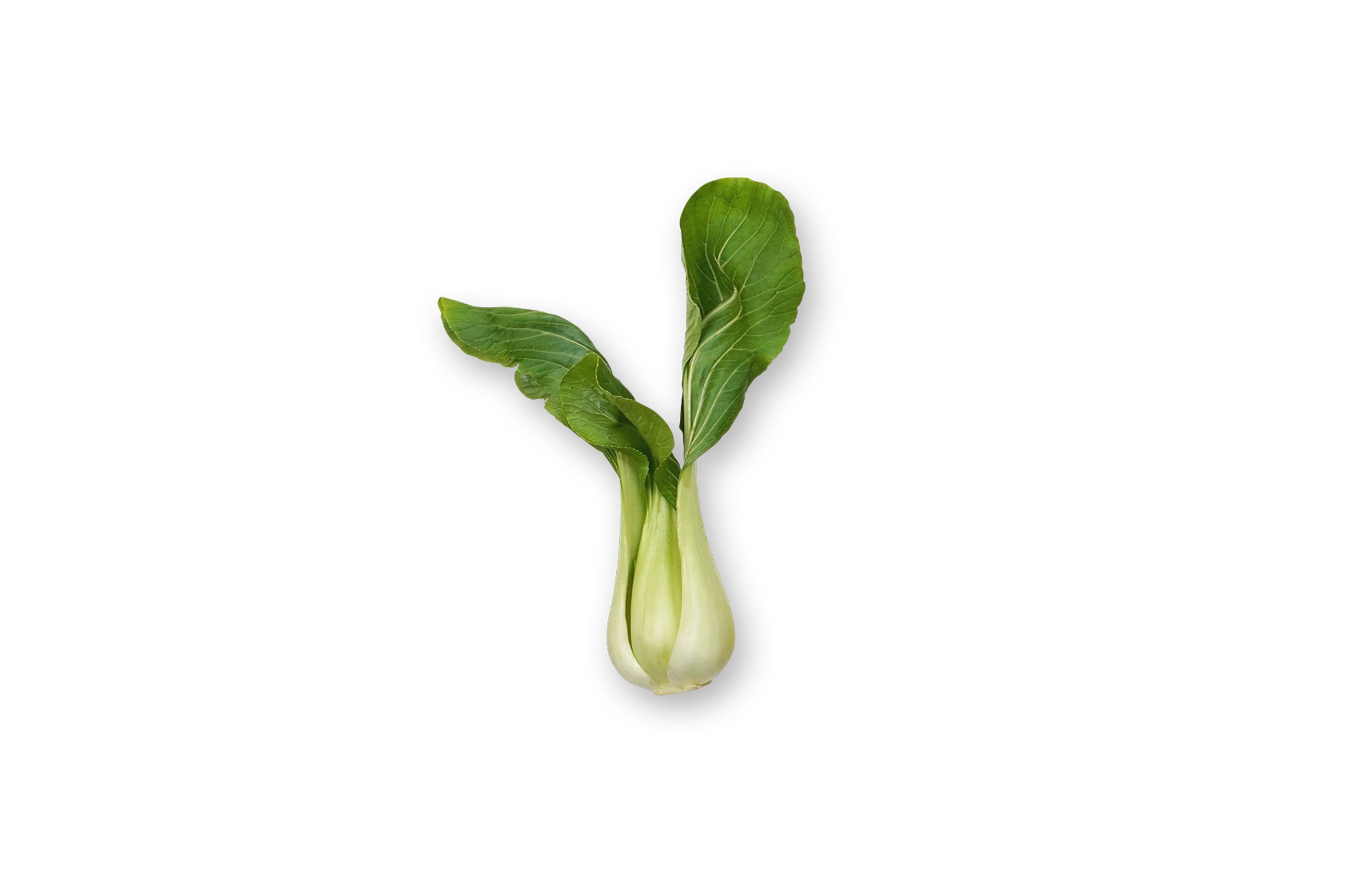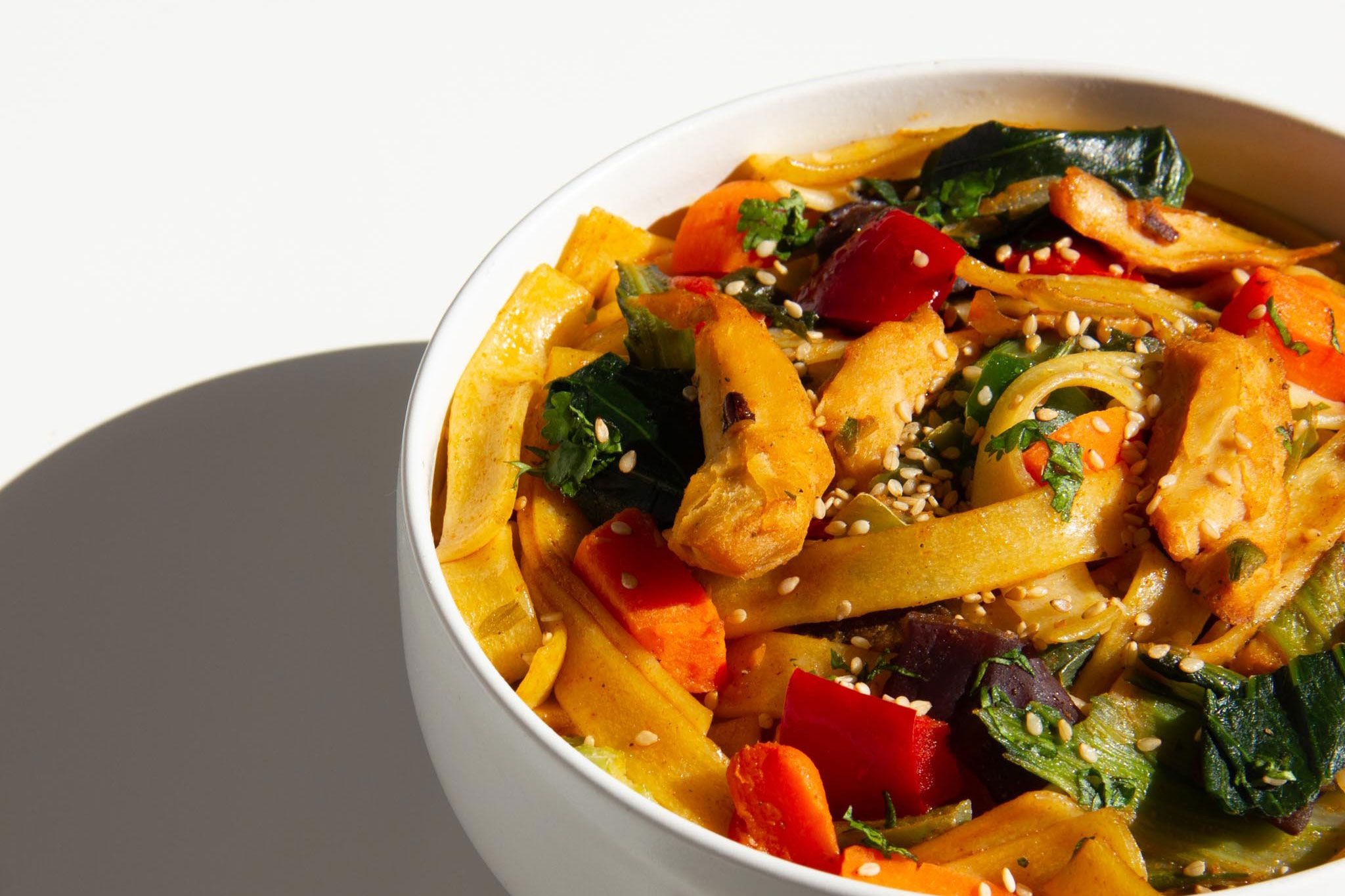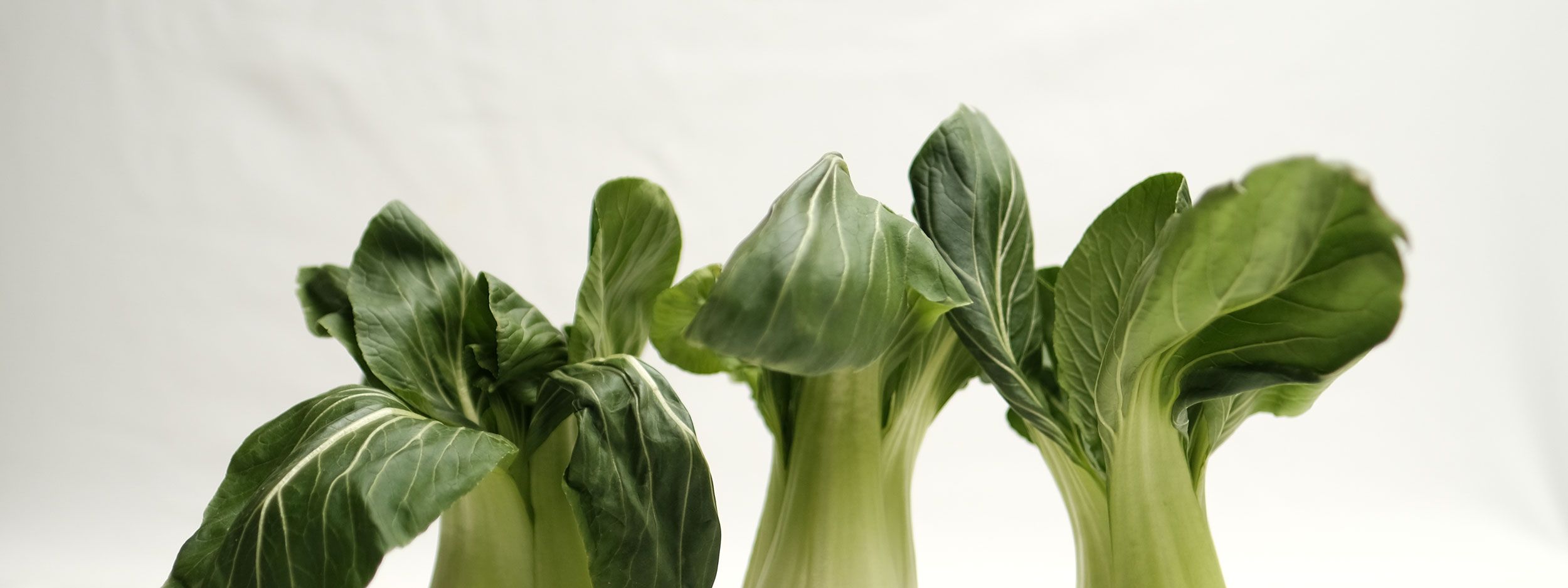Pak Choi
The cousin of cabbage
Intro
A popular vegetable for over 1500 years and full of vitamins – Pak Choi has travelled a great distance from its birthplace of China, and made its way to Europe. Pak Choi is delicious both raw and cooked. We’ll tell you a bit more about this special vegetable below.

What is Pak Choi?
Pak Choi originates from China, and translated, means “white” or “green” vegetable. It’s also sometimes referred to as the chinese collard green, due to its slightly mustardy flavour.
Pak Choi has been cultivated for over 1500 years in both China and Europe (primarily in the Netherlands and Spain) where it thrives in the warmth of a greenhouse.
The cruciferous plant is recognizable by its typical structure: circular dark green leaves that look like stems that grow from the small rosettes, as well as juicy white leaf veins. In terms of taste and appearance, Pak Choi lies between flowers and Chinese cabbage. It is often used instead of spinach or chard and is a vegetable with a high water content (~95%).

Where does Pak Choi come from?
Pak Choi is originally from China, where it was already grown in the year 400 AD. It was only until the 18th century that it was brought to Europe and subsequently popularized.
What varieties are there?
In addition to regular Pak Choi, there are two other varieties:
Baby Pak Choi - smaller leaves
Shanghai Pak Choi - green leaf veins and stems
When is Pak Choi in season?
Pak Choi grows between Mai and October. It prefers sun or semi-shade as well as a nutrient and chalk-rich soil. With sufficient water, Pak Choi is ready to be harvested 5-9 weeks after being planted.
Our tips for cooking with Pak Choi:
1.Remove the external leaves
2.Remove the stem
3.Remove and wash inner leaves
4.Remove leaves from stem and slice
You should eat your Pak choi as soon as you can. Store it in a damp paper cloth in your fridge, for no more than a week. In raw form, you can add it to your salad.
Use Pak Choi in:
Woks, curries, soups, risottos, pasta dishes, casseroles, savoury pancakes, omelettes, dumplings and green smoothies
Spices that work well with Pak Choi:
Nutmeg, Coriander, Ginger, Lemongrass, Cumin, Curry, Turmeric, Garlic, Sesame And Soy sauce
Pak Choi Nutrition Facts per 100g:
| Typical Values | 100g |
|---|---|
| Calories | 17 |
| Fat | 0.2g |
| Carbohydrates | 2.2g |
| Fibre | 1g |
| Sugar | 1.2g |
| Protein | 1g |
Nutrients found in Pak Choi:
Vitamins:
Beta Carotene, folic acid and Vitamins A, B, C, E and K1
Minerals:
Calcium, Iron, Potassium, Magnesium, Copper, Chloride, Sodium, Phosphorus, Zinc, Sulphur and Manganese
Trace elements:
Sulphur compounds (Mustard oil glycoside)


